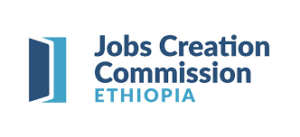Design of a Performance-based Contract Aimed at Enhancing Workforce Development Outcomes in Ethiopia
General Info
Supported entity and its role in implementing the program:
-
Ministry of Labor and Services (MoLS)-Ethiopia
-
Jobs Creation Commission (JCC)-Ethiopia
Implementing Partners: BPDO, AWSAD, ECDD, Cheshire, Kidame Mart
Sector:
-
Workforce Development
Instiglio’s point of contact:
-
Douglas Emeott – douglas.emeott@instiglio.org
Type of support provided by Instiglio:
-
Results-based Funding (Design of a Performance-based Contract between workforce development Implementing Partners (IPs) and the MoLS)
Executive Summary
Ethiopia’s workforce is rapidly expanding, with the market struggling to absorb millions of new, young entrants each year. This is especially challenging for vulnerable groups, such as refugees, internally displaced persons, homeless youth, and women. In response, the Government of Ethiopia – the Jobs Creation Commission together with the Ministry of Labor & Skills – launched the TILA program in 2021 in partnership with the Mastercard Foundation. The TILA program was implemented by five non-governmental organizations across Ethiopia to improve representation of vulnerable groups in the design and implementation of labor market policies and programs; increase access to information of employment opportunities; and build employability and business development skills. In Phase 1 (2021-2024), TILA successfully created over 21,000 employment opportunities.
Despite this success, barriers to even better program performance and results were identified by Ethiopia’s Ministry of Labor & Skills. Instiglio worked with the ministry to assess program design and performance, identifying solutions that would help TILA implementers take performance to the next level for an extension period of TILA from 2024 to 2025. Key challenges identified from Phase 1 were i) the inability of many businesses to remain viable in the long term after creation and ii) limited access to critical and sustainable financing for these populations to maintain their businesses.
Thus, Instiglio partnered with MoLS and JCC to redesign the contracts with the five implementing partners to create performance incentives aimed to address these two key challenges. These performance-based contracts offer valuable learning opportunities during the no-cost extension period (July 2024 – July 2025) and will inform how best to improve the design of Phase 2 of the TILA program, expected for (July 2025 – 2030). These performance-based contracts apply the power of Results-Based Financing to help improve job creation and business sustainability. Whereas contracts initially paid implementing partners based on completing defined activities, the performance-based contracts now shift the focus of implementing partners to achieve measurable outcomes by tying a portion of financial payments to the achievement of three key metrics: timely loan repayment, business survival, and employment linkages, Instiglio’s support also provided the Government of Ethiopia with a payment tool and implementation guidelines to accompany that performance-based contract designs, as well as a capacity-building workshop with implementing partners to support smooth program implementation under the performance-based contract design.
Project
Partners


Implementing
Partners





The challenges and opportunity
The workforce in Ethiopia is expanding. However, the labor market is struggling to absorb approximately 2 million individuals reaching working age annually. Those most affected by this challenge are often the most vulnerable, including refugees and asylum seekers who, as of July 2023, add up to more than 930,000. Vulnerable populations in Ethiopia face barriers to securing sustainable livelihoods in a constrained job market. In response, the Ethiopian Jobs Creation Commission launched the TILA program to foster inclusive job creation for refugees, internally displaced persons, women, homeless youth, and individuals with disabilities.
Phase 1 of the TILA program (April 2021 to 2024) created over 21,000 employment opportunities. However, despite this success, the Government of Ethiopia – the Ministry of Labor & Skills and the Jobs Creation Commission – identified persisting issues that put program success at risk. First, the jobs created have not been sustainable. Approximately 80% of jobs created under the TILA program were in self-employment. Self-started businesses have struggled to survive and grow, especially in areas like Amhara and Tigray where political instability has bred violence and unrest, which severely affect the work environment. Another contributing factor to poor business sustainability has been high inflation. Since the start of Phase 1, inflation has risen by over 9.5%, diminishing business viability by increasing operational costs and shrinking profit margins. Additionally, business have not been sustainable as business skilling and resources for entrepreneurs has not been strong. Implementing partners provide business development support to entrepreneurs, but implementing partners often lack experience in sustainable employment initiatives to be truly effective.
The second key challenge identified is low bank confidence regarding repayment by entrepreneurs, resulting in unwillingness to provide loans. Businesses need funding to open and operate. If banks do not provide loans, entrepreneurs will struggle to get businesses off the ground. To address this challenge, Phase 1 of the TILA program partnered with banks to provide financing, creating risk-sharing arrangements where banks only assume 50% of the loan default risk and the government assumes the other 50%. Even with this financial security provided, banks have maintained conservative lending practices, limiting access to much-needed funds for vulnerable groups.

What was our response and what was it about?
Instiglio worked with Ethiopia’s Ministry of Labor & Skills to help overcome the identified program performance challenges and support the drive for greater program performance and results for job seekers and entrepreneurs. During a no-cost extension of Phase 1 (July 2024- June 2025), and before a larger scale-up of TILA program in Phase 2 (estimated July 2025-July 2030), Instiglio designed a results-based approach – performance-based contracts – to improve sustainable livelihood results for vulnerable populations. Instiglio designed performance-based contracts between the ministry and the five implementing partners of the TILA program that use financial incentives to focus performance on achieved outcomes for the problem areas identified as needing most improvement. The performance-based contracts tie financial disbursements to the achievement of three key metrics: (i) timely loan repayment, (ii) business survival and improvements, and (iii) employment linkages.
This performance-based approach has additional benefits beyond putting the focus of implementing partners on the incentivized outcomes (i.e., metrics) for improvement. First, it enhances accountability by defining clear targets and results upfront, which aligns expectations across actors on what the program should achieve. This incentivizes strong performance management to track, understand, and report on performance, which creates accountability. After all, implementing partners will not receive funding disbursements for targets not met. Second, the focus put on achieved outcomes provides implementing partners the flexibility to innovate and adapt. Rather than implement on prescribed activities, implementing partners can react to challenges and learning in real time. For example, an implementing partner that receives payment for each “in-person business training conducted” is certain conduct business trainings, even if evidence or context on the ground point to the need for something else. If, say, inflation were to make the cost of in-person business trainings unfeasible, the implementing partner still has an incentive to conduct them to receive payments. Incentivizing the implementing partner to impact “business survival” on the other hand opens the door to try other activities that may be more (cost) effective than the prescribed in-person trainings.
Instiglio and Ethiopia’s Ministry of Labor & Skills designed performance-based contracts to use during the one-year, no-cost extension of Phase 1 of the TILA. Primary objectives for this work were:
1. Test the potential of performance-based contracts to improve results for job creation and business sustainability within the TILA program.
2. Generate critical insights and learning to inform the design of Phase 2 of the TILA program, estimated for July 2025 – 2030. Desired insights include: a) comparison of results from Phase 1 (no performance-based contracts) and no-cost extension of Phase 1 (with performance-based contracts) to understand if/how this mechanism impacted performance; b) identification of high-performing implementing partners (performance on pre-determined results and targets); and c) identification of best performing approaches and activities that can inform future designs by focusing on what has shown to deliver sustainable outcomes for the vulnerable groups.
To these ends, Instiglio successfully designed:
A results-based financing model (i.e., performance-based contracts) for the TILA program
What we did
First, Instiglio expanded the TILA Theory of Change from its original Phase 1 to better capture key employment pathways for both wage employment and self-employment. A clear Theory of Change is crucial as it maps the links between activities, outputs, and desired outcomes. Using the Theory of Change, we identified the outputs and outcomes that were most critical to achieving the program’s long-term goals. Second, we utilized the Theory of Change to build the performance-based contracts. Contracts put financial incentives on the achievement of identified results of interest from the Theory of Change to push implementers to focus and enhance performance. To achieve program goals, it was important to focus incentives not only on jobs, but also on improved access to business networks, improved skills, and better tools for business creation. Accordingly, performance-based contracts were designed to financially reward implementing partners for achievements in three payment metrics:
i. Timely Loan Repayment. Measures the number of businesses that received Business Development Support (BDS) and repaid loans on time (measured quarterly).
ii. Business Survival and Improvements. Measures the number of enterprises that survived and showed improvements in key business areas (measured half-yearly).
iii. Employment Linkages. Measures the number of successful job placements and jobs created for the target beneficiaries (measured quarterly).
Why it matters
The RBF design directly addresses the key challenges identified by Ethiopia’s Ministry of Skills & Labor from Phase 1 of the TILA program implementation. By linking payments to these metrics, the model draws attention to areas that need improvement, incentivizing implementers to direct effort and resources where they will make the most impact.
How it will contribute to driving job creation and business sustainability within the TILA program:
The incentivizes will steer implementing partners to focus on improving job placements and business development through tailored support for beneficiaries. The incentive placed on job sustainability helps ensure actors focus on longer-term solutions and results and that they are free to explore the best formula that delivers that, whether it be through skills training, improved access to finance, building market linkages, or – likely – a balanced mix. Consequently, more sustainable outcomes result as job placements are secured and businesses are equipped to grow, generating long-term employment and economic stability for marginalized groups. Additionally, data and learning generated from the performance-based model will spotlight concrete results of which targets were met and by whom. Accordingly, the ministry may now use quantitative performance data to know which implementing partners (and “right mix of approaches, strategies, and activities” they employ) work best, which can inform future program designs (Phase 2 of TILA program) and even policy in the livelihood, labor market, and employment spaces.



Lessons learned and recommendations
1. Stakeholder engagement and government ownership is crucial for long-term success
Active stakeholder engagement, especially as led by government partners, lays the foundation for program success by building ownership and fostering collective responsibility. From the outset, we worked closely with Ethiopia’s Ministry of Labor & Skills through deep-dive sessions to understand the challenges from Phase 1. This partnership was led by a single champion at the ministry who served as our counterpart. This created many benefits. First, efficiency in design. Attention was not diffused across many actors, decisions to advance the design were made efficiently, and logistics to collaborate were not interrupted by challenges of having to onboard multiple parties. Second, a strong foundation of trust. Our government counterpart was actively involved to co-create the performance-based contracts, trusted our expertise and judgement, and was familiar with our thinking after spending months together to deeply assess lessons learned from Phase 1. Third, alignment and ownership. Regular design sessions were vital to align on objectives and key design elements, such as selecting payment metrics and setting performance targets for implementing partners. Our government champion also ensured our performance-based design maintained alignment with national priorities, which increases prospects to scale and replicate this model for TILA and beyond. Continuous government involvement also empowered them to own the performance-based model, which is their role as TILA continues into its no-cost extension for Phase 1.
To strengthen buy-in and to ensure program success, Instiglio and the ministry co-facilitated workshops with implementing partners, explaining the rationale behind the performance-based design elements. Having the ministry communicate the value of the performance-based model was key to ensure alignment and enthusiasm from implementing partners on this new approach.
2. Leveraging existing systems streamlines the RBF design process
Building on existing structures reduces complexity, minimizes costs, and encourages faster adoption by stakeholders for results-based approaches and design. Key steps to facilitate this include assessing existing structures within programs and identify relevant aspects that can be applied to current initiatives. New mechanisms (e.g., performance-based contracts) should align as much as possible with existing systems to avoid disruptive effects, such as confusing participants or slowing progress. Designing the performance-based contract we aimed to limit disruption, for example, by utilizing the TILA program’s existing milestone-based disbursement system to create a foundation for the new payment structures. Under the updated performance-based contract, implementing partners are still required to deliver on the same program metrics. The minor change, however, is that three metrics have additional financial incentives tied to their achievement. Further, by using existing measurement and evaluation frameworks, we also streamlined the verification process, minimizing disruptions while reinforcing trust and comfort with the system.
Thus, expectations and processes for implementing partners were not dramatically changed as the performance-based design merely introduces additional financial rewards for performance. This not only helped evade additional implementation costs but also facilitated quicker buy-in, demonstrating the value of leveraging familiar systems to enable innovation, critical aspects that can help the program more easily scale in Phase 2.
3. Streamlining objectives enhances clarity and focus
Streamlining objectives helps maintain clarity and focus and requires careful prioritization of goals from the outset. Designing the performance-based contract for the TILA program, we first identified the critical outcomes based on Phase 1 challenges, which were poor perception of loan repayment, business survival, and job creation. Objectives of the performance-based approach were then narrowed to focus on how to improve performance in these areas. By setting clear, measurable targets for each of these outcomes, we eliminated unnecessary complexity and avoided dispersing attention across multiple goals. Implementing partners now have a clearer understanding of what success is under the performance-based model. Additionally, during stakeholder workshops, we consistently communicated these streamlined objectives, reinforcing their connection to the broader TILA program goals. Identify the key outcomes that drive the most impact, focus objectives around these outcomes, and communicate these priorities regularly to maintain alignment and accountability.
4. Adaptability is important in a dynamic policy environment
Policy environments can be highly fluid due to political instability, economic fluctuations, and other external factors. Thus, adaptability for programs is key to success. In designing the performance-based contacts for the TILA program, we built flexibility into the model to account for the potential effects of political unrest and economic volatility in Ethiopia. After gathering input from implementing partners, it was clear that performance could be significantly impacted by these external factors. To mitigate this, the performance-based contract design allows implementing partners to recover disbursements they missed in one quarter by achieving targets in the subsequent quarter. This helps ensure short-term disruptions do not permanently penalize performance. Consequently, this offered a mitigation for short-term fluctuations helping implementing partners remain focused on long-term objectives while managing short-term disruptions without being severely penalized for factors out of their control.

